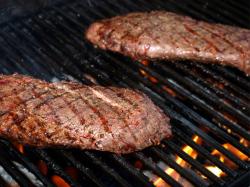A Butcher's Daughter Proves There Are New Ways To Carve A Roast
June 11, 2012 | 1 min to read

About the last place you would expect something new is at the grocer's meat counter. After all, we've been butchering animals since the Stone Age.
Kari Underly is proving, however, that even meat cutters can be innovative. A third-generation butcher, Ms. Underly, 44, along with others, was recruited by the National Cattlemen's Beef Association to develop new ways to carve up a carcass to boost sales and profits. The result was the flatiron steak, introduced to the market in 2002. It resembles the conventional butler's steak with one significant difference: It doesn't have the undesirable length of connective tissue that relegated the butler's steak to the tables of butchers' families.
She was part of a team that took a stab at beef chuck several years later and came up with the Denver cut, a cousin of the New York strip steak. “I used my retail background in what consumers would want and what would make retailers money,” she says.
Ms. Underly is all about meat. She has been called a beef evangelist and can't avoid butcher shops even when traveling. Her father, a butcher who once ran a country store in her hometown of South Bend, Ind., tried to steer her away from the trade. (Her sister is a vegetarian.) She spent two years at Southwestern Michigan College just across the state line before she had to work to earn tuition money. In 1988 she joined regional chain Martin's Super Market in South Bend, where managers tried to put her in deli counter or human resources jobs.
To read the rest of the story, please go to: Crain's Chicago Business
